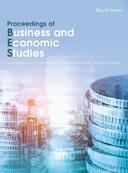Abstract
This paper examines the impact of key economic factors on trade volumes between China and the Regional Comprehensive Economic Partnership (RCEP) member states. Studies have shown that gross domestic products (GDP), exchange rate, and inflation have an impact on China’s import and export trade volume with RCEP member states. China’s export trade volume to RCEP member states is deeply affected by China’s GDP, but the import trade volume depends on China’s domestic demand and market. The impact of exchange rates on import and export trade volumes varies from country to country. China’s export volume to RCEP member states is generally more affected by the consumption level of its residents than the consumption level of Chinese residents.
References
Ren Z, Fan C, Hua Y, et al., 2020, The Birth of the World’s Largest Free Trade Zone RCEP: Content, Influence and Prospects. Develop Res, 2020(12): 4–8.
Ping L, 2020, The Pace of Economic Integration in the Asia-Pacific Region—with RCEP as the Center. APAC Secur Ocean Res, 2020(06): 4 + 111–124.
Qi L, 2013, RCEP: Opportunities and Countermeasures for China to Promote East Asian Economic Cooperation. APAC Econ, 2013(01): 13–16.
Liu W, Chen J, 2014, Research on the Competitiveness of TPP and RCEP and Its Impact on “Triple” Trade between China, America and Asia. APAC Econ, 2014(05): 3–7.
Zou G, Wu L, 2016, Construction of China-ASEAN Free Trade Area under the Background of TPP and RCEP: Challenges and Responses. J Jishou Univ (Soc Sci Ed), 37(02): 53–61.
Zhang T, 2021, RCEP: Features, Problems and Prospects. Int Outlook, 13(02): 120–135 + 157–158.
Qian J, Wang T, 2019, “One Belt and One Road” Initiative, Host Country System and China’s Foreign Direct Investment—An Empirical Consideration Based on Dynamic Panel Data GMM. Int Trade Iss, 2019(03): 101–114.
Wang L, Chen S, 2019, Research on the Trade Efficiency and Potential of the Bangladesh-China-India-Myanmar Economic Corridor—Analysis Based on the Stochastic Frontier Gravity Model. APAC Econ, 2019(04): 47–54 + 150–151.
Ouarda TBMJ, Charron C, Hundecha Y, et al, 2018, Introduction of the GAM Model for Regional Low-Frequency Analysis at Ungauged Basins and Comparison with Commonly Used Approaches. Environ Model Softw, 109: 256–271.
